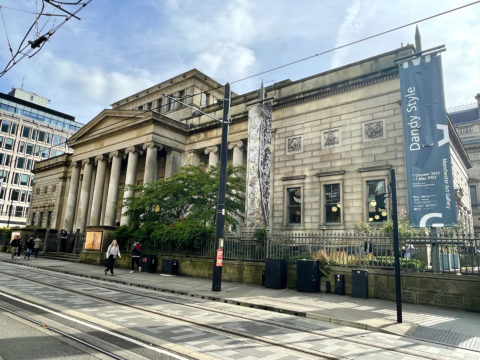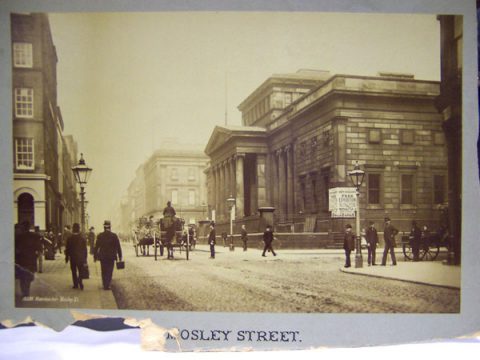Successive generations – the powerful and the ordinary, residents and visitors alike – have walked through its grand porticoed entrance and responded with pleasure or wonder or fury to its contents.
In 1849, the great Victorian art critic and social commentator John Ruskin wrote
‘the greatest glory of a building is not in its stones, nor in its gold. Its glory is in its Age, and in that deep sense of voicefulness… which we feel in walls that have long been washed by the passing waves of humanity.’

Ruskin famously hated Manchester. By 1882, when the Royal Manchester Institution handed its building and collections over to the city for the founding of a public art gallery, this one-time market town had become ‘Cottonopolis’, the commercial centre of a global textile industry.
To Ruskin, it represented all that had gone wrong in society. Goods flowed in and out of the city, generating immense wealth for some, but for others, living and working conditions of utter degradation. Between 1800 and 1880, the population increased from 70,000 to 400,000, as people flocked from surrounding towns and villages not just to work in the city’s mills but to build the infrastructure they depended on, from machinery to railways, warehouses to workers’ housing.
Enthusiasts and critics alike travelled to see for themselves the phenomenon of the world’s first industrial city, model of unregulated laissez-fair capitalism. Reformers campaigned for better housing, sanitation and education to meet the needs of the rapidly expanding populace. And the populace self-organised, into political affiliations, trades unions and co-operative societies.
Manchester, in the second half of the 19th century, was a hotbed of commercial entrepreneurship and radical politics.

In the midst of it all, a small group of reformers pushed for the creation of a free public art gallery. Inspired by Ruskin, it was intended to provide a refuge from the toxic effects of life and work in an industrial city, to provide respite and moral education for the city’s working classes through exposure to beauty.
The members of the Royal Manchester Institution for the Promotion of Literature, Science and the Arts offered its building to house the new gallery, and its own collection of 150 artworks – mostly paintings, works on paper and sculpture – to start it off. The RMI had been established in 1823 to counteract Manchester’s widely held reputation as a place of commercial philistinism.
Its Mosley Street building, designed by Charles Barry in the Greek Revival style, opened in 1835, housing concerts, lectures, a growing art collection and the newly founded School of Design, later to become the Manchester School of Art. Visitors to the RMI were welcome, on payment of a 6d entrance fee. By 1882, however, the Institution’s finances were in decline and this essentially private enterprise was given over to the city, on condition that the Manchester Corporation spend a minimum of £2000 per year for the next 20 years purchasing new work for the collection.
Manchester City Art Gallery duly opened in January 1883, offering free entry for all.
